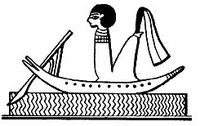Moore writes about James Hillman for HuffPost
"I was taken by his loyalty to Jung expressed through his original and fresh re-working of key ideas. He calmly removed unnecessary gender issues from Jung's ideas of the anima and soul. He advocated a view of the person as made up of multiple, dynamic faces that should be kept in tension rather than "integrated" into some sentimental notion of wholeness. In hundreds of pages he worked through the struggle between age and youth, senex and puer, that causes individuals and culture itself to stumble."Moore concludes:
"If I had to sum up his life, I would say that he lived in the lofty realm of thought and yet also like one of the animals he loved so much. He was always close to his passions and appetites and lived with a fullness of vitality I have never seen elsewhere. To me, he taught more in his lifestyle and in his conversation than in his writing, and yet his books and articles are the most precious objects I have around me."Read Thomas Moore’s tribute in his October 2011 newsletter, and his recent blog post about A Blue Fire, a collection of James Hillman's writings that he edited.
Labels: James Hillman















